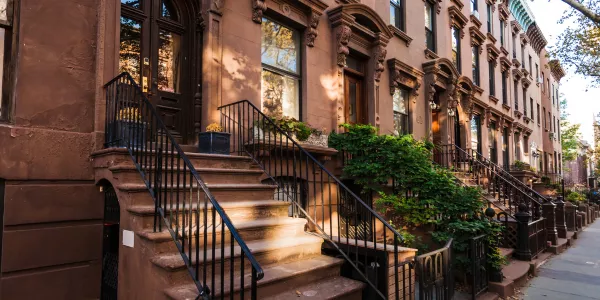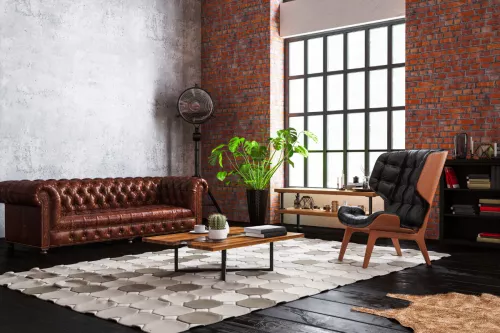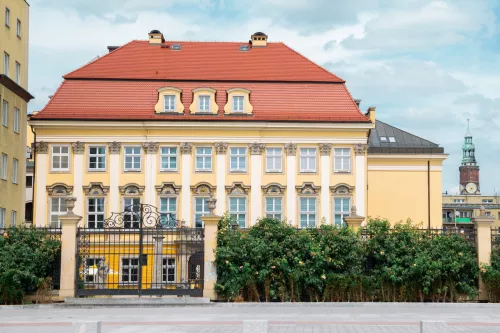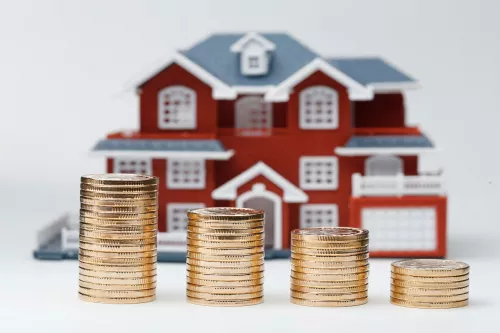Brownstone homes, with their distinctive warm, reddish-brown sandstone facades, have become an iconic symbol of certain historic neighborhoods in the United States, particularly in New York City, Boston, and Chicago.
Many fictional characters on TV live in one of these historical home styles, making us dream of having the opportunity of living in one of them as well. These buildings, typically constructed during the 19th century, offer a glimpse into a bygone era of architectural elegance and urban development.
Are you curious about the various aspects of brownstone houses? Here we’ll talk about their characteristics, history, costs, and how they differ from other types of homes, along with their pros and cons. Keep reading!!
What is a Brownstone Home?
A brownstone home is more than just a house built with brown sandstone; it's a piece of architectural history. These homes are usually terraced or row houses, recognizable by their distinctive brown sandstone front.
Originating in the 19th century, brownstones are particularly prevalent in historic neighborhoods of major cities. The term "brownstone" not only refers to the material used but also denotes a particular style of urban living, characterized by high ceilings, ornate details, and often, a series of steps leading to a grand entrance.
Characteristics of Brownstone Houses

What sets a brownstone apart is primarily its façade made from brown sandstone, a material chosen for its availability and aesthetic appeal during the 19th century.
These homes are known for their tall, narrow structure, often spanning multiple floors. Inside, one can expect to find historical features such as detailed moldings, wooden floors, fireplaces, and large windows. The layout typically includes a "parlor floor" raised above street level, providing privacy and light.
A genuine brownstone townhouse is often characterized by:
- A façade in shades of brown, red, or tan
- Interior structures made of brick
- A distinctive stone staircase leading to the entrance
- Ornate Italianate designs adorning the exterior
- No gaps between adjacent homes, forming a continuous row
Brownstone Home History

The history of brownstone homes is intertwined with the urban expansion of American cities in the 19th century. As the middle and upper classes grew, there was a demand for stylish, durable housing, which the brownstone material aptly provided. Quarried in places like New Jersey, Connecticut, and beyond, this sandstone became the material of choice for urban row houses, symbolizing wealth and sophistication.
A fun fact is that the iconic front stoop associated with these townhouses has an interesting origin. Initially, stoops served a practical function rather than being a social gathering spot.
They were designed to elevate the entrance above the street level, safeguarding residents from the urban nuisance of horse manure prevalent in the streets at the time. Thankfully, both the function and the context of stoops have evolved significantly over the years.
Are Brownstones Expensive?
Due to their historical significance, architectural uniqueness, and often prime urban locations, brownstones can be quite expensive. Their cost is not only a reflection of the building itself but also of the land value in densely populated neighborhoods.
Their scarcity since the cessation of brownstone production is also a factor which increases their price. Additionally, the elevated cost is attributed to the fact that many brownstones are designated as historic landmarks, enhancing their market value. Maintenance and renovation of these historic properties can also add to the overall expense, making them a significant investment.
Brownstone vs. Rowhouse
While the terms "brownstone" and "rowhome" are sometimes used interchangeably, there is a distinction. Essentially, a rowhouse is a specific type of townhouse characterized by its alignment in a straight line along a street, but not every townhouse fits this description.
A rowhome refers to any terraced or semi-detached urban house that shares walls with its neighbors, regardless of its construction material. A brownstone, on the other hand, specifically refers to a rowhome built with or faced with brown sandstone.
It’s important to note that while some brownstones function as rowhouses, others serve as townhouses. However, the category of townhouses includes all variations of brownstones. Townhouses can be arranged in various layouts, not limited to the linear formation of rowhouses.
This might seem puzzling, but it's simply a matter of understanding the distinctions in architectural styles and arrangements.
Pros and Cons of Brownstone Homes
Choosing to rent or buy a brownstone comes with several attractive benefits that make these properties highly sought after. Let's take a look at a few:
Benefits of Living in a Brownstone
Aesthetic Appeal and Historical Charm
Brownstones stand out for their historical architectural details, drawing from styles such as Queen Anne, Romanesque Revival, and Neo-Grec. The design features include high ceilings, large windows, and dramatic entryways, evoking an era where architecture was seen as an art form.
Spacious and Light-Filled Interiors
The interiors of a classic brownstone often feature large parlors and dining rooms, with layouts that promote openness and natural light, distinguishing them from other residential styles of their time.
Detailed Craftsmanship
The intricate hand-carved woodwork and ornate millwork in brownstones, including crown moldings and mantelpieces, add a level of sophistication and elegance. Original hardwood floors and antique tiles often remain, adding to the charm.
Outdoor Spaces
Many brownstones offer the rare urban luxury of private outdoor spaces, such as gardens, patios, or even rooftop areas, enhancing the living experience by providing an oasis in the city.
The Quintessence of Urban Living
Residing in a brownstone epitomizes classic city life, with many of these historic buildings located in vibrant and desirable neighborhoods, offering a unique blend of community and convenience.
Challenges of Brownstone Living
Living in a brownstone offers a unique blend of historical charm, architectural beauty, and urban convenience, but it's important to consider the potential for higher maintenance and renovation costs.
Maintenance and Upkeep
The age and unique features of brownstones can lead to higher maintenance and repair costs. The iconic sandstone facades are durable but the buildings may require attention to plumbing, wiring, appliances, and structural elements due to their historical nature.
Potential for Costly Renovations
Restoring a brownstone, especially one considered historically significant, can be expensive. Renovations may need specialized craftsmen and could involve regulatory complexities, adding to the cost..
People also ask
Can brownstones be found in cities other than New York?
Yes, while New York is famous for its brownstones, they can also be found in cities like Boston, Philadelphia, and Chicago, among others.
Are all brownstones historic?
Many brownstones are indeed historic, dating back to the 19th century, but there are also newer constructions that mimic the traditional brownstone style.
Is it difficult to modernize a brownstone?
Modernizing a brownstone can be challenging, as owners often need to navigate preservation regulations while updating the interiors. However, with the right approach, it's possible to blend modern conveniences with historic charm.

 Marcio Vasconcelos
Marcio Vasconcelos





